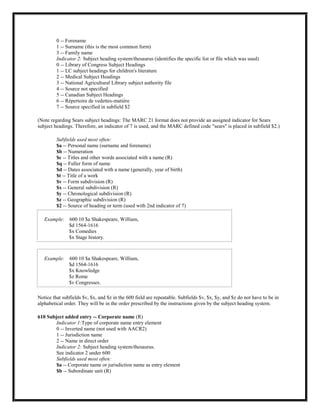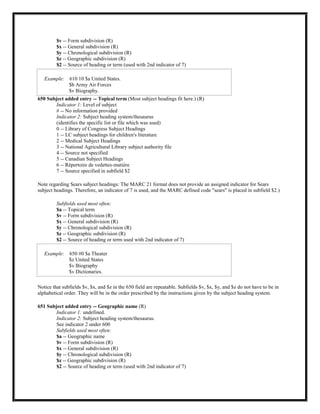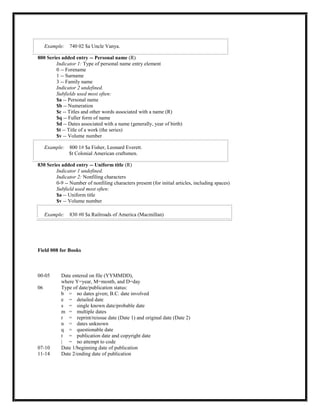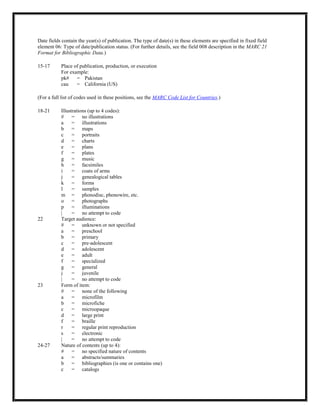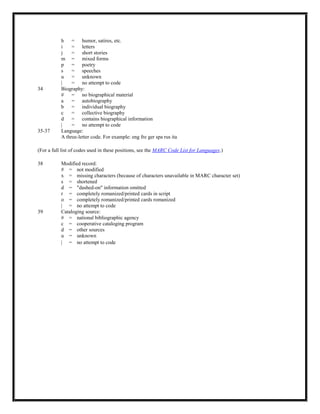This document provides an overview of MARC tags used for cataloging. It lists common MARC tags such as the 010 for Library of Congress Control Number, 020 for ISBN, 100 for main author entry, 245 for title statement, and 650 for topical subject headings. For each tag, it identifies the indicators, repeatability, and most common subfields used with examples. The document serves as a reference for the MARC tags and their structure for cataloging library materials.




